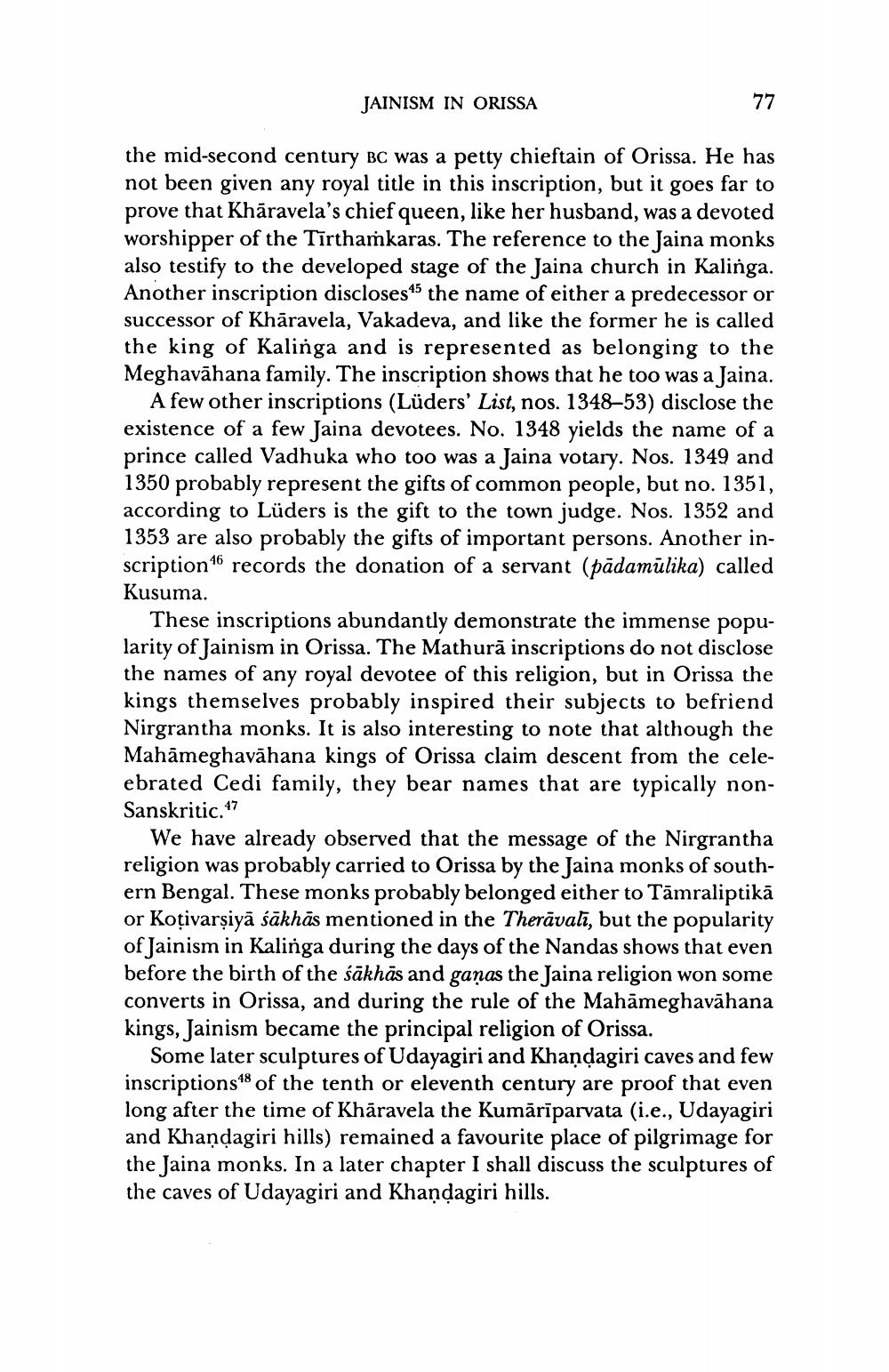________________
JAINISM IN ORISSA
77
the mid-second century BC was a petty chieftain of Orissa. He has not been given any royal title in this inscription, but it goes far to prove that Khāravela's chief queen, like her husband, was a devoted worshipper of the Tīrthamkaras. The reference to the Jaina monks also testify to the developed stage of the Jaina church in Kalinga. Another inscription discloses 45 the name of either a predecessor or successor of Khāravela, Vakadeva, and like the former he is called the king of Kalinga and is represented as belonging to the Meghavāhana family. The inscription shows that he too was a Jaina.
A few other inscriptions (Lüders' List, nos. 1348–53) disclose the existence of a few Jaina devotees. No. 1348 yields the name of a prince called Vadhuka who too was a Jaina votary. Nos. 1349 and 1350 probably represent the gifts of common people, but no. 1351, according to Lüders is the gift to the town judge. Nos. 1352 and 1353 are also probably the gifts of important persons. Another inscription 46 records the donation of a servant (pādamūlika) called Kusuma.
These inscriptions abundantly demonstrate the immense popularity of Jainism in Orissa. The Mathurā inscriptions do not disclose the names of any royal devotee of this religion, but in Orissa the kings themselves probably inspired their subjects to befriend Nirgrantha monks. It is also interesting to note that although the Mahāmeghavāhana kings of Orissa claim descent from the celeebrated Cedi family, they bear names that are typically nonSanskritic.47
We have already observed that the message of the Nirgrantha religion was probably carried to Orissa by the Jaina monks of southern Bengal. These monks probably belonged either to Tāmraliptikā or Koțivarșiyā śākhās mentioned in the Therāvalī, but the popularity of Jainism in Kalinga during the days of the Nandas shows that even before the birth of the sākhās and gaņas the Jaina religion won some converts in Orissa, and during the rule of the Mahāmeghavāhana kings, Jainism became the principal religion of Orissa.
Some later sculptures of Udayagiri and Khandagiri caves and few inscriptions48 of the tenth or eleventh century are proof that even long after the time of Khāravela the Kumāriparvata (i.e., Udayagiri and Khaņdagiri hills) remained a favourite place of pilgrimage for the Jaina monks. In a later chapter I shall discuss the sculptures of the caves of Udayagiri and Khandagiri hills.




